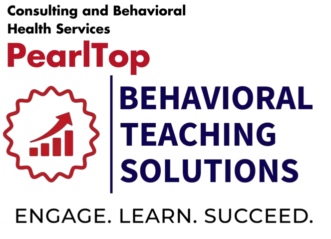What is Autism Spectrum Disorder (ASD)?
Autism spectrum disorder (ASD) is a complex developmental condition that involves persistent challenges in social interaction, speech and nonverbal communication, and restricted/repetitive behaviors. The effects of ASD and the severity of symptoms are different in each person.
ASD is usually first diagnosed in childhood with many of the most-obvious signs presenting around 2-3 years old, but some children with autism develop normally until toddlerhood when they stop acquiring or lose previously gained skills. According to the CDC, one in 59 children is estimated to have autism. Autism spectrum disorder is also three to four times more common in boys than in girls, and many girls with ASD exhibit less obvious signs compared to boys. Autism is a lifelong condition. However, many children diagnosed with ASD go on to live independent, productive, and fulfilling lives.
– https://www.psychiatry.org/patients-families/autism
Early Signs of Autism
People with ASD have difficulty with social communication and interaction, restricted interests, and repetitive behaviors.
The list below gives some examples of the types of behaviors that are seen in people diagnosed with ASD. Not all people with ASD will show all behaviors, but most will show several.
Red Flags
- Social communication
- Inconsistent eye contact
- Do not usually respond when called by name
- Does not show interest to others
https://www.nimh.nih.gov/health/topics/autism-spectrum-disorders-asd/index.shtml
Diagnosis
The diagnosis of Autism Spectrum Disorder (ASD) is based on diagnostic evaluations that often involve a team including a physician and a psychologist, and may include other disciplines such as speech and language pathology or occupational therapy. The evaluation should include standardized observations of the individual, assessments of his/her learning and cognitive abilities, and interviews to gather information about behavior across multiple settings and her/his medical and developmental history.

Autism: A quick trip to my home planet by Monique Botha
Treatment
Collaboration with an interdisciplinary team is a crucial component to have an effective treatment package.
There are a number of behavioral treatments for ASD that have been shown to change cognitive level (e.g. IQ), specific skills (e.g. vocabulary, social skills, and joint attention), and behavioral and challenges and mood, though comparative data contrasting different treatments are not available. Medications have been shown to reduce behavioral challenges and mood. There is much interest in identifying treatments that change the core features of ASD.
The earliest intervention is the BEST treatment intervention.
 For more information please visit https://www.apa.org/topics/autism
For more information please visit https://www.apa.org/topics/autism
Developmental Milestones
https://www.cdc.gov/ncbddd/actearly/pdf/checklists/Checklists-with-Tips_Reader_508.pdf
Risk Factors for Autism Spectrum Disorder
Researchers don’t know the exact causes of ASD, but studies suggest that genes can act together with influences from the environment to affect development in ways that lead to ASD. Although scientists are still trying to understand why some people develop ASD and others don’t some factors that increase the risk of developing ASD include:
- Having a sibling with ASD
- Having older parents
- Having certain genetic conditions (For example, people with conditions such as Down syndrome, fragile X syndrome, and Rett syndrome are more likely than others to have ASD.)
- Being born with a very low birth weight
- Not everyone who has these risk factors develops ASD.
Different perspective about Autism: Neurodiversity Paradigm by Jan den Houting
For more information, please visit
NIMH website www.nimh.nih.gov
MedlinePlus (National Library of Medicine) https://medlineplus.gov
(En español: https://medlineplus.gov/spanish)
ClinicalTrials.gov www.clinicaltrials.gov
(En español: https://salud.nih.gov/investigacion-clinica)


